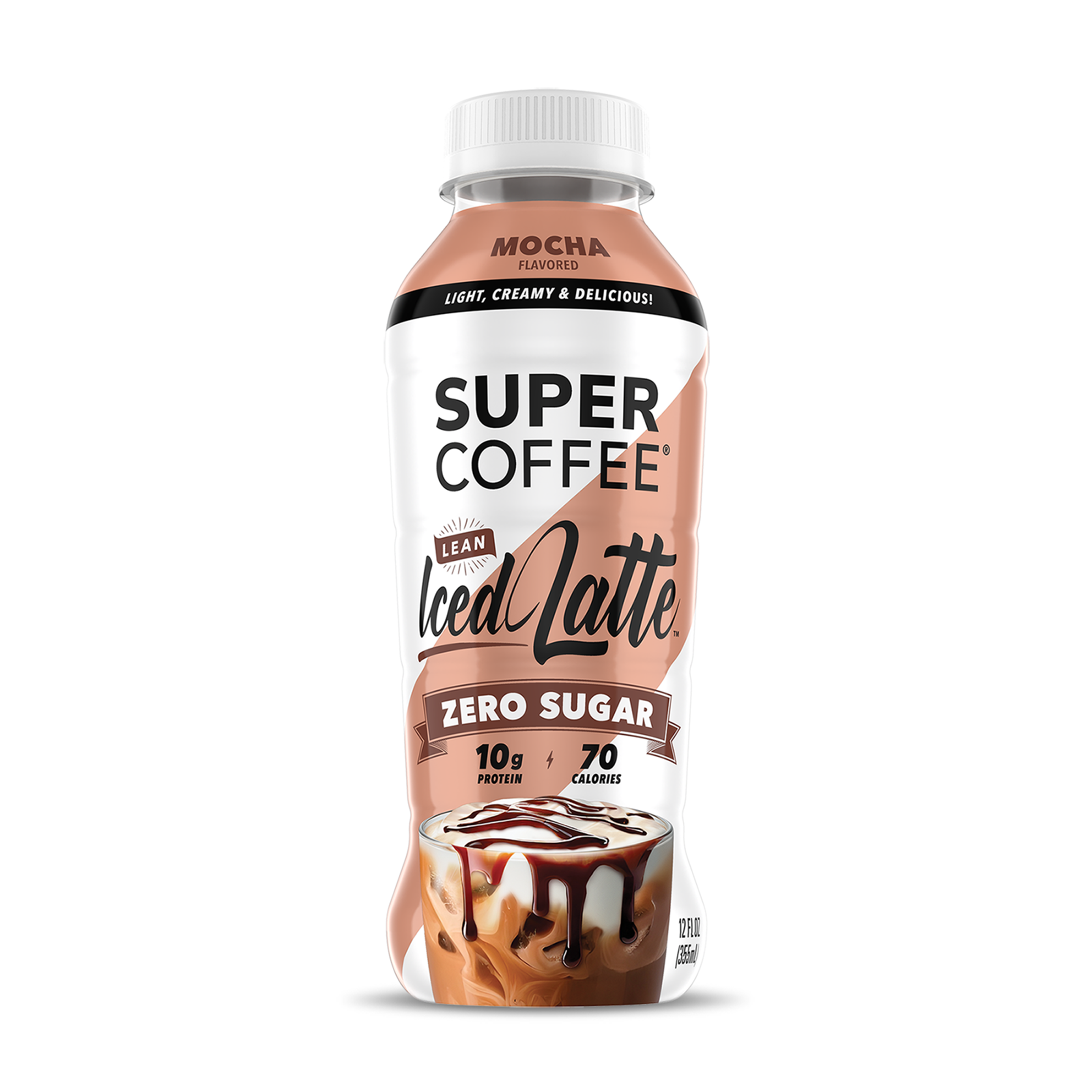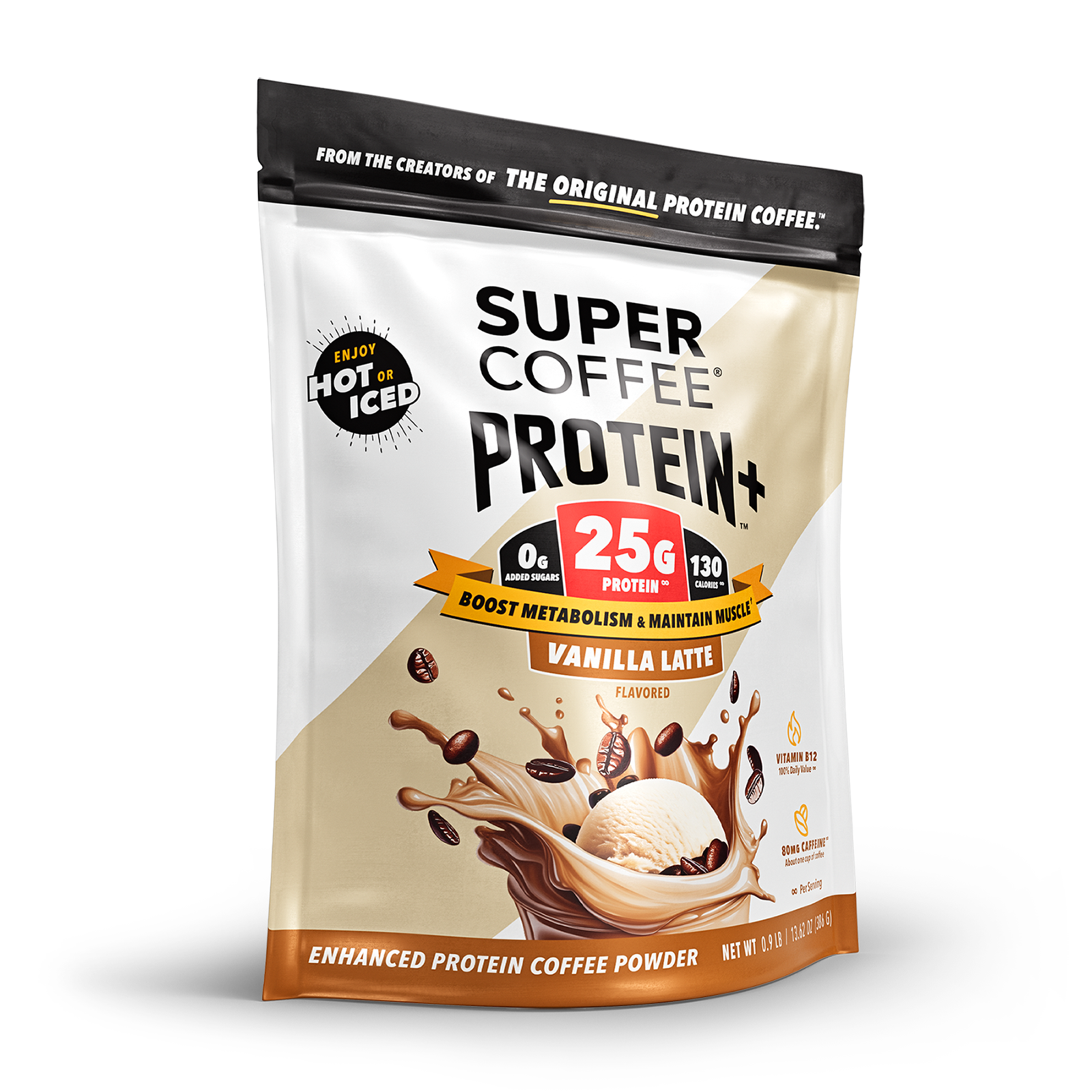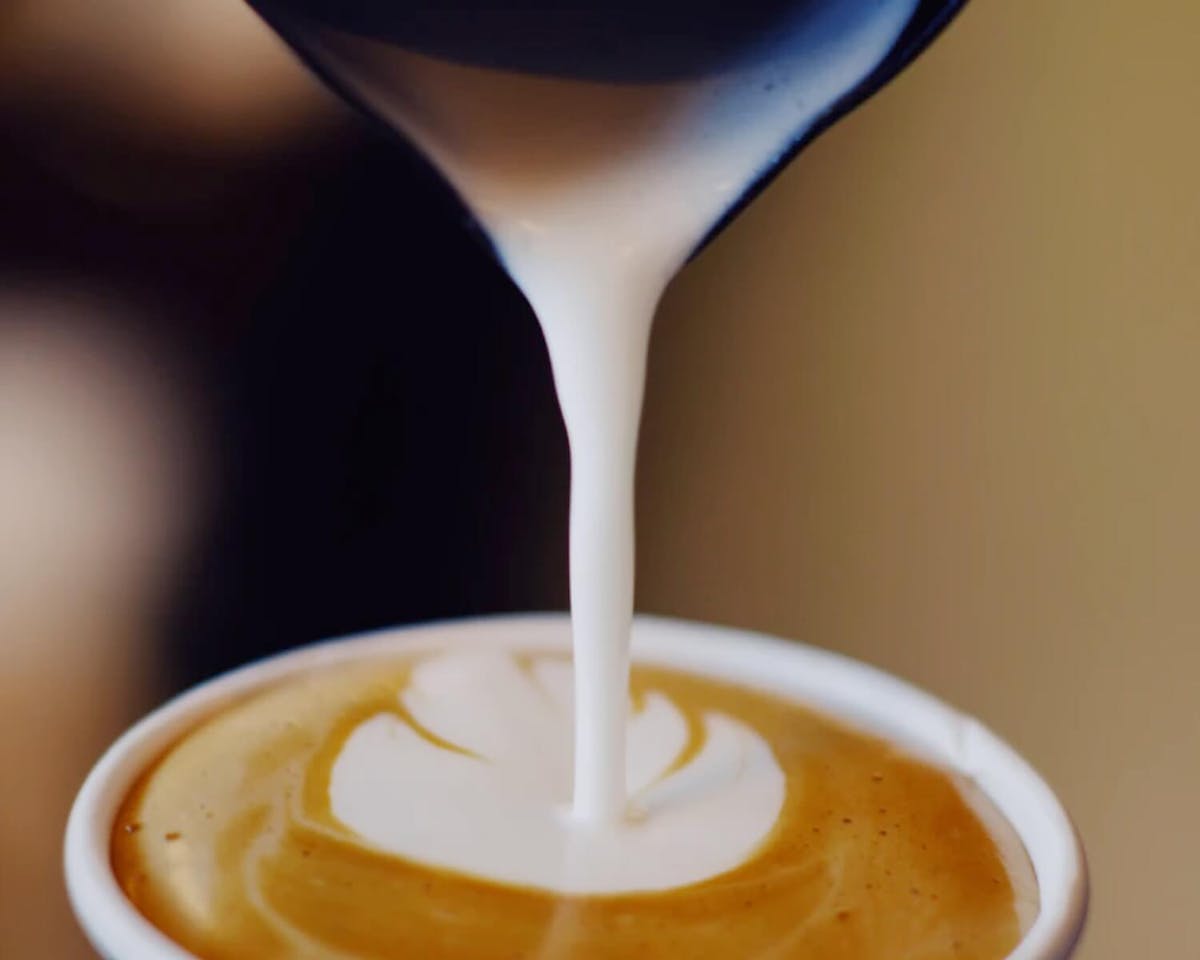Your cart is empty
What comes to mind when you think about coffee creamer?
Here’s one possibility: the small single-serve cups you get at a fast food restaurant or the local diner, or the communal vat of powder that sits next to the office coffee makers.
If you’re like most people, you don’t pay much attention to them. You probably just dump the liquid or powder into your cup and move on with life – as long as they don’t form clumps or chunks in your coffee.
Here’s another possibility: flavored creamers that are more like treats than cream. We’re talking about choices like Starbucks Caramel Macchiato, International Delight Cinnabon Cinnamon Roll, or Coffee-Mate Cheesecake Factory Strawberry Cheesecake.
If they’re appealing to you, you might save them for a reward or a special occasion. They’re expensive, and there’s the nagging feeling that they’re more of guilty pleasure than an everyday creamer. You might also suspect that they’re not very good for your health.
Here’s one more possibility: you’re health conscious, and you guess – or understand – that coffee creamers are a poor substitute for the real thing. You might even be on a low-carb diet like keto – and you know that most creamers are off-limits.
There’s a terrific way to deal with all of those issues and concerns. Homemade coffee creamer can be just as good, or better, than the stuff you buy at the store or find in the office break room. It’s also a great way to save money.
Most importantly, it’s better for you than the vast majority of commercial coffee creamers.
Need a guide to making your own homemade coffee creamer? We happen to have one right here, but let’s first deal with some important questions.
Is Store-Bought Coffee Creamer Bad For Your Health?
Sorry to deliver the bad news, but – in most cases – that commercially-made white stuff you put into your morning coffee is indeed bad for you. (We’ll get to the exceptions in a little while.) To make things easy, let’s consider the most popular coffee creamer in America, Coffee-Mate. The other big name competitors like International Delight are similar in their ingredients.
These creamers contain some milk protein (meaning they’re not classified as dairy-free), but they are non-dairy products – meaning they don’t contain milk or cream. And most are liquid. What makes them liquid?
Well, water to start, but that won’t create the creamy consistency that coffee drinkers expect. The ingredient that does the heavy lifting is vegetable oil. That’s right, there’s vegetable oil in most coffee creamers.
To the manufacturers’ credit, most no longer use hydrogenated oil (which we know better as trans fat). They’ve replaced it with high-oleic oils, created specifically to be healthier than their hydrogenated cousins. High-oleic oils are generally lower in saturated fat, making today’s commercial coffee creamers “better” for heart health and cholesterol levels than their predecessors.
That doesn’t mean they’re good for your health. They still contain some saturated fat, and high-oleic soybean oil contains quite a bit. Even worse, the powdered versions of many of these creamers still contain dehydrated hydrogenated oils.
Let’s move on from oils, to sugar. There’s a lot of it in most store-bought coffee creamers. It’s in the form of corn syrup, which is pure glucose. As you can guess, that means there are lots of calories and carbohydrates in creamers like Coffee-Mate, in addition to the fat.
When you add the recommended serving (three tablespoons) of original Coffee-Mate to a cup of coffee, you’re also adding 60 calories, six grams of carbs and three grams of fat. And if you’re adding that Strawberry Cheesecake flavor we mentioned earlier, make it 105 calories, 15 grams of carbs and 4.5 grams of fat. To put it mildly, that’s not optimal for your health. It’s certainly not optimal if you’re on a diet, and definitely not acceptable if you’re on keto.
Finally, a number of emulsifiers and “buffering agents” like monoglycerides, diglycerides and dipotassium phosphate, plus artificial flavorings and the problematic thickener carrageenan are commonly added to store-bought creamers. None are health-threatening by themselves, at least according to the FDA, but you certainly wouldn’t add any of them to your healthy homemade coffee creamer.
One question down, two to go.
Would Milk or Cream be a Better Choice?
They’re each better choices from a nutritional standpoint. Dairy milk and cream contain calcium, of course, along with vitamins (like vitamin A, vitamin C and lots of B vitamins) and other minerals (like potassium and magnesium) that provide health benefits you won’t find in a store-bought coffee creamer.
However, they each still contain high amounts of calories and/or fat: 120 calories and 12 grams of fat in a standard serving of heavy cream, 18 calories and two grams of fat in a serving of milk. The numbers for skim milk or whole milk aren’t horrendous, but they add up quickly if you drink the average 3-4 cups of coffee per day that American adults consume.
Non-dairy milks can be a better choice, particularly for low-fat dieters. Hemp milk, for example, contains just eight calories, zero carbs and well under a gram of fat; oat milk, almond milk and pea milk are comparable. Just be sure they’re unsweetened, because the sweetening can bring you right back into high-calorie, high-carb territory.
That’s all well and good – but whether you go with dairy milk or hemp milk, you’re still not going to get those yummy, different flavors that commercial coffee creamers bring to the table.
That brings us to homemade coffee creamers.
Are Homemade Creamers Bad for You?
That’s up to you – after all, you’re the one choosing the ingredients. You can easily add natural and healthy flavorings to your coffee creamer, so the “unhealthiest” ingredients are usually in the creamer’s base. Let’s consider the options.
Condensed Milk
Most recipes for homemade coffee creamers use sweetened condensed milk as a base. It’s easy to understand why; the sugar used to sweeten it also acts as a preservative to extend its expiration date. Most coffee drinkers also find condensed milk more satisfying, both because of its creaminess and because of its taste.
Homemade creamer that uses sweetened condensed milk as a base won’t contain the oils and problematic ingredients found in off-the-shelf products. And since it’s basically nothing more than concentrated milk, it provides even more protein, vitamins and minerals (like B2, B12, calcium, magnesium and zinc) than regular milk.
However, it’s still loaded with calories and carbs. Sweetened condensed milk contains 90 calories and 15 grams of carbs (plus 2.5 grams of fat) before anything else is added – and many recipes suggest mixing it with skim milk, which adds more calories and carbs to the mix. And obviously, any creamer made with condensed milk isn’t dairy-free, so it’s not suitable for the lactose-intolerant.
Evaporated Milk
One way to create homemade creamer that’s better for you is to use evaporated milk instead of condensed milk as a base. Evaporated milk is essentially unsweetened condensed milk that’s been homogenized, so it doesn’t contain the added sugar that contributes so many calories and carbs. There are about 40 calories and three grams of carbs in a serving, making it a healthier choice than condensed milk.
Naturally, there’s a downside: because evaporated milk is unsweetened, you’ll need to add other ingredients to equal the sweetness of condensed milk. Then again, isn’t adding other delicious ingredients one of the best reasons to make your own creamer? (That is, other than the fact that the ingredients will cost less than a package of commercial creamer.)
Non-Dairy Milk
Coconut milk is the base ingredient of choice for most vegans or health-conscious coffee drinkers. It makes a delicious coffee creamer, but it also contains nearly 70 calories and seven grams of fat per serving.
Unsweetened almond milk, cashew milk and similar choices might sound like good ideas, but here’s the problem: the nut milks you buy in the grocery store are generally too thin to make a good creamer base. You have to combine them with other ingredients like heavy cream, coconut milk or coconut cream, maple syrup or pureed dates, in order to get the right consistency – and that means adding calories, carbs and/or fat.
If your goal is finding the “healthiest” base for homemade coffee creamer, evaporated milk is probably the best choice. But since you’re making your own creamer, why not make your own base, too?
Make Your Own Coffee Creamer Bases
Make Your Own Sweetened Condensed Milk
This one will be much lower in calories than store-bought condensed milk, but it will be much higher in fat. Hey, you can’t always have everything!
- Whisk one cup of whole milk with 3/8 cup sugar substitute. Allulose is the best choice.
- Simmer over low heat and whisk until the milk is reduced by half, about 30 minutes.
- Stir in four tablespoons of butter (there’s the fat!) and cool.
Here’s another homemade condensed milk recipe that’s even better for those on keto.
- Combine 1¼ cups of heavy cream, 3/8 cup sugar substitute and two tablespoons of butter.
- Cook over medium heat, while whisking, until the mixture reaches a boil.
- Reduce heat and simmer for 30 minutes. Cool in refrigerator.
Make Your Own Dairy-Free Almond Base (or Creamer)
Here’s one that’s low in calories and fat, and it’s also perfect for keto dieters. Prep time is short, but the total time to make it is a full day. Plan ahead for this one.
- Cover half a cup of blanched almonds with water in a container with a lid, and soak for 24 hours in the refrigerator.
- Drain the almonds and rinse them completely.
- Blend the almonds with 1¼ cups of water for several minutes, until creamy, then strain.
- To turn this base into a creamer, just add two tablespoons of sweetener (much less if using stevia or monk fruit extract, of course) and ½ teaspoon of hazelnut extract, vanilla extract or almond extract. Refrigerate in an airtight container and stir before use.
Our earlier descriptions of standard creamer base ingredients sounded pretty good to you? Let’s see how to turn them into yummy homemade coffee creamer.
Standard Homemade Coffee Creamer Bases
There are all sorts of ways to take ingredients like condensed milk, regular milk, cream or non-dairy milk and turn them into a quick-and-easy, delicious homemade creamer base. Here are just a few.
- Combine one 14-ounce can of sweetened condensed milk with 1½ cups skim milk. Blend or shake in a mason jar to mix thoroughly. (Almond milk can be substituted for the skim milk.)
- Combine ½ cup heavy cream, ½ cup unsweetened almond or cashew milk and ¼ teaspoon pure stevia or monk fruit extract. Mix thoroughly and refrigerate.
- Simmer 13½ ounces (one can) of coconut milk for 15 minutes. Add 1/3 cup maple syrup and simmer another 10 minutes. Mix in ½ to ¾ cup almond milk. (The calories are strong in this one!)
Ready for the really good stuff? Let’s cook up some complete homemade coffee creamer recipes.
Turning Homemade Coffee Creamer into Something Special
Coffee-Mate and International Delight creamers have been popular for decades – but the companies took sales to a new level when they began crafting specialty flavors of coffee creamers.
There’s no reason you can’t do the same – that is, take your DIY creamer base to a new level by adding your favorite flavors. And these creamers aren’t only terrific for use in black coffee; try adding them to espresso, iced coffee, or even a homemade latte. You won’t be disappointed.
Here are some suggestions; just remember that if you’re on keto or another low-carb diet, you’ll have to be careful to use keto-friendly ingredients.
Simple Homemade Coffee Creamer Flavorings
- Milk chocolate creamer: Two tablespoons chocolate syrup, one teaspoon vanilla extract.
- Dark chocolate creamer: Two tablespoons chocolate syrup, one teaspoon cocoa powder.
- White chocolate creamer: One cup of powdered white chocolate.
- Chocolate almond creamer: One teaspoon of almond extract, one tablespoon of cocoa.
- Vanilla creamer: Two teaspoons pure vanilla extract. (Add vanilla beans from a fresh pod to make French vanilla coffee creamer.)
- Coconut creamer: Two teaspoons coconut extract.
- Hazelnut creamer: Two teaspoons hazelnut extract.
- Cappuccino creamer: One teaspoon almond extract, ½ teaspoon almond extract.
Gourmet Homemade Coffee Creamer Flavorings
- Peppermint mocha creamer: Two teaspoons peppermint extract, one tablespoon cocoa powder, two teaspoons instant coffee.
- Pumpkin spice creamer: 1½ teaspoons pumpkin pie spice.
- Caramel macchiato creamer: One tablespoon caramel extract.
- Cinnamon roll creamer: One teaspoon cinnamon, one tablespoon vanilla extract, one teaspoon almond extract.
- Almond Joy coffee creamer: Two tablespoons chocolate syrup, one teaspoon almond extract, one teaspoon coconut extract.
- Strawberry cheesecake coffee creamer: One tablespoon strawberry milk mix, ¼ teaspoon cinnamon.
As a reminder: many of these coffee creamers won’t be low-calorie, low fat or low-carb. That’s the bad news.
The good news? There are great creamer alternatives for those on keto or other diets.
The Healthiest Coffee Creamers
The explosion of interest in keto dieting has led to an explosion of products designed specifically for the low-carb diet market.
And that includes coffee creamers. You can find a number of keto-friendly creamers on Amazon or in some supermarkets; many of them are even quite tasty, in addition to being good for your health.
One of the best is Super Creamer. It’s made by the same company that produces keto-friendly, ready-to-drink Super Coffee, with most of the same key ingredients: cream, milk protein, zero-carb monk fruit sweetener, and the MCT oil that helps keto dieters lose weight quickly.
There may not be candy- or pastry-inspired varieties, but the sweet cream, coconut mocha, hazelnut and French vanilla flavors (among others) will add a tasty twist to any cup of coffee. They’re low-calorie, zero-carb, zero-cholesterol, low-fat – and the easiest way to add healthy creamer to your coffee without having to do any extra work in the kitchen.
Blog posts
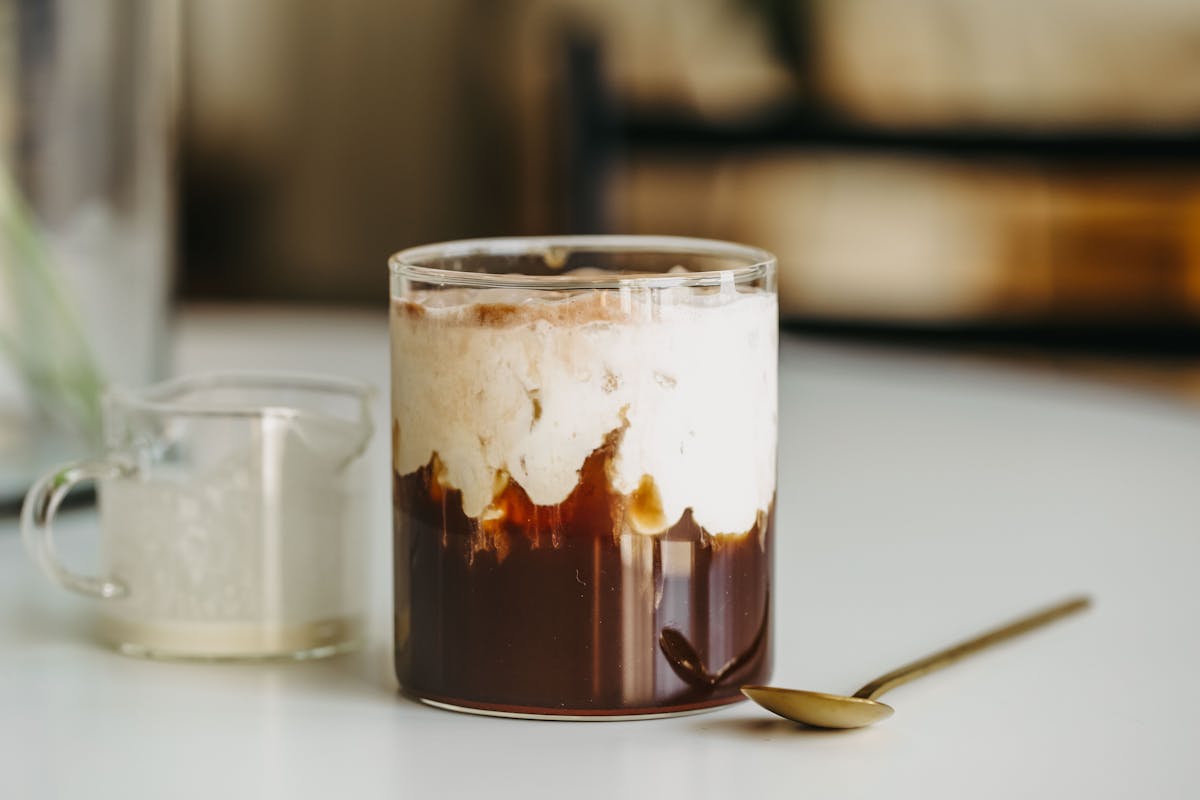
Cold, creamy and delicious - This chocolatey cold brew recipe is the perfect treat to kickstart your morning! The Recipe Chocolate Cream Cold Brew Prep Time: 1 minutes Cook Time: 5 minutes Ingre...
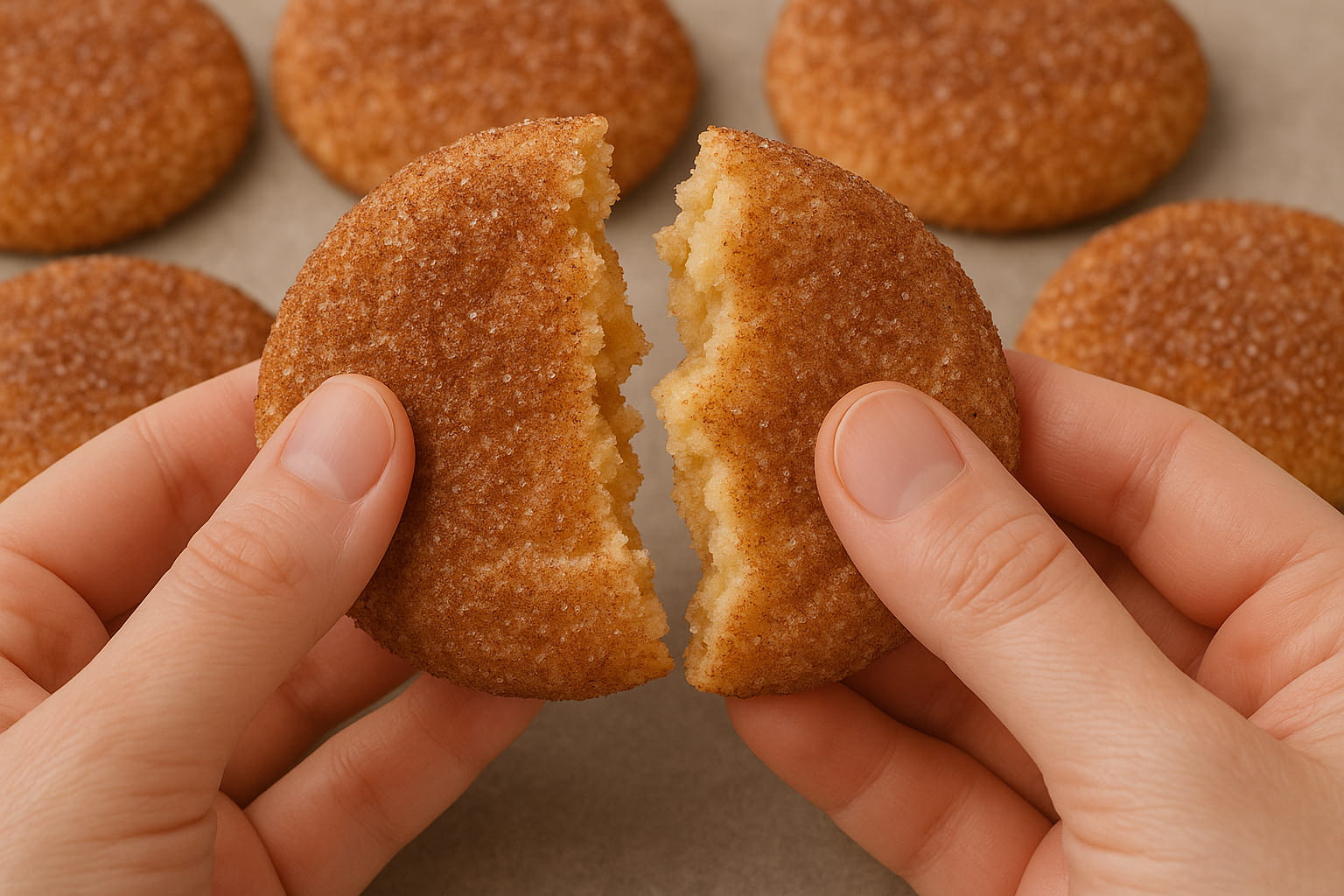
Indulge in the warm embrace of autumn with Pumpkin Spice Snickerdoodles - soft, spiced, and utterly irresistible! The Recipe Pumpkin Spice Snickerdoodles Prep Time: 10 minutes Cook Time: 1 hour ...
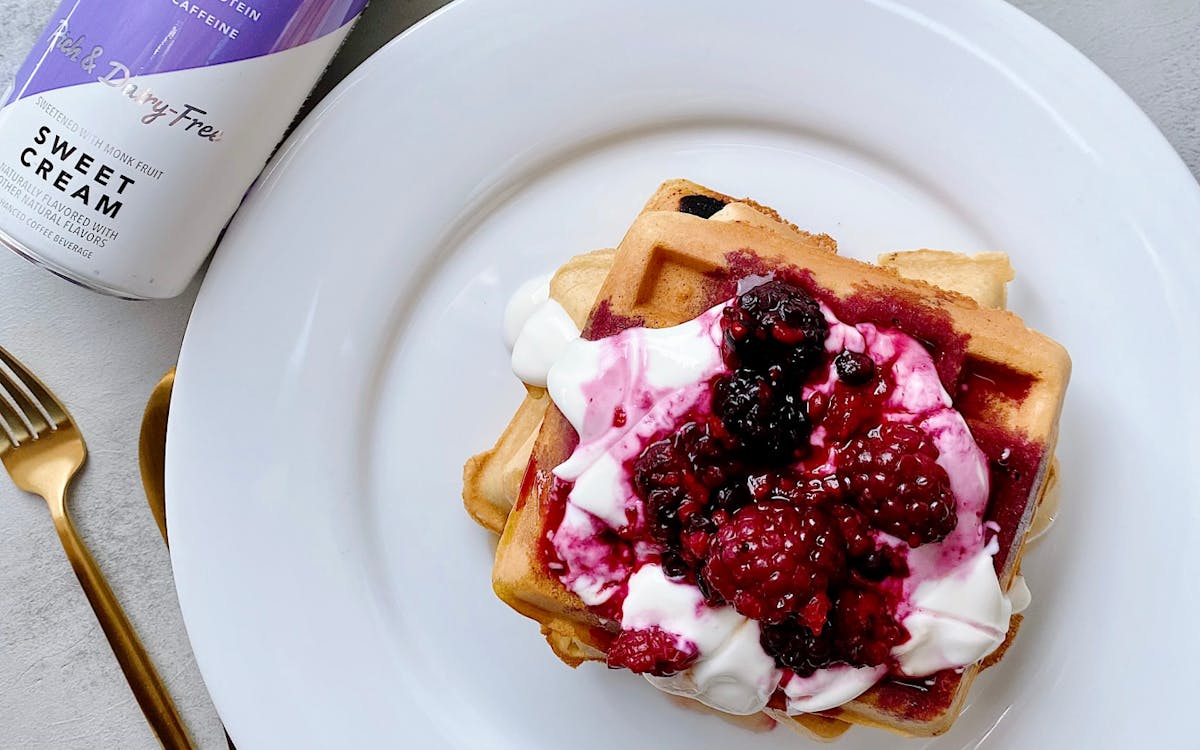
Low Carb Berries & Cream Waffles
These low carb/low sugar waffles are delicious, wonderfully crispy on the outside, and fluffy on the inside. You can also double batch and freeze for easy weekday breakfasts. Featuring our almost-...
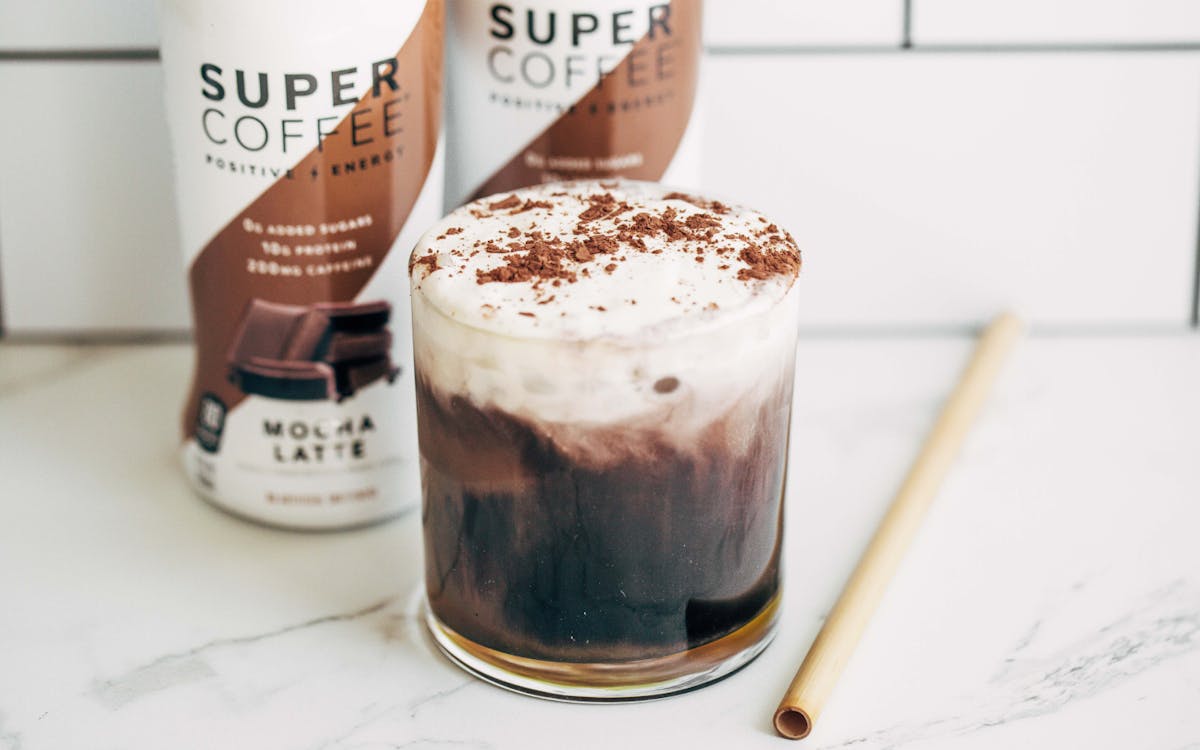
This may be the most fun latte recipe we’ve tried yet! With gooey & decadent black chocolate drizzle and a thick layer of creamy French Vanilla, just one sip of this iced latte will transport ...
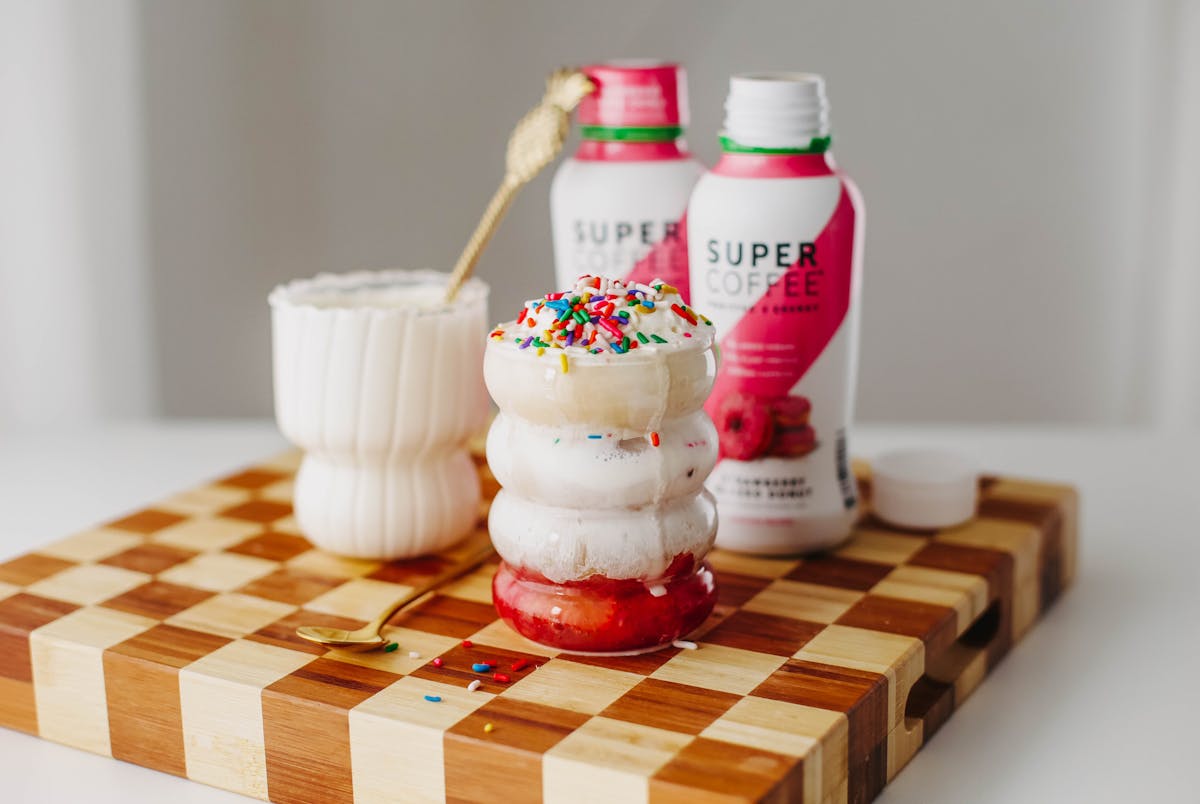
Strawberry Sprinkle Keto Coffee Recipe
Nutritional Info Calories: 274 Fat: 26.7g Carbs: 5.7g Protein: 4.5g Sugar: 2.1g Ingredients 3 strawberries, sliced. 3-4 tbsp heavy cream or half & half. Enough ice to fill a glass. 1/2 cup S...
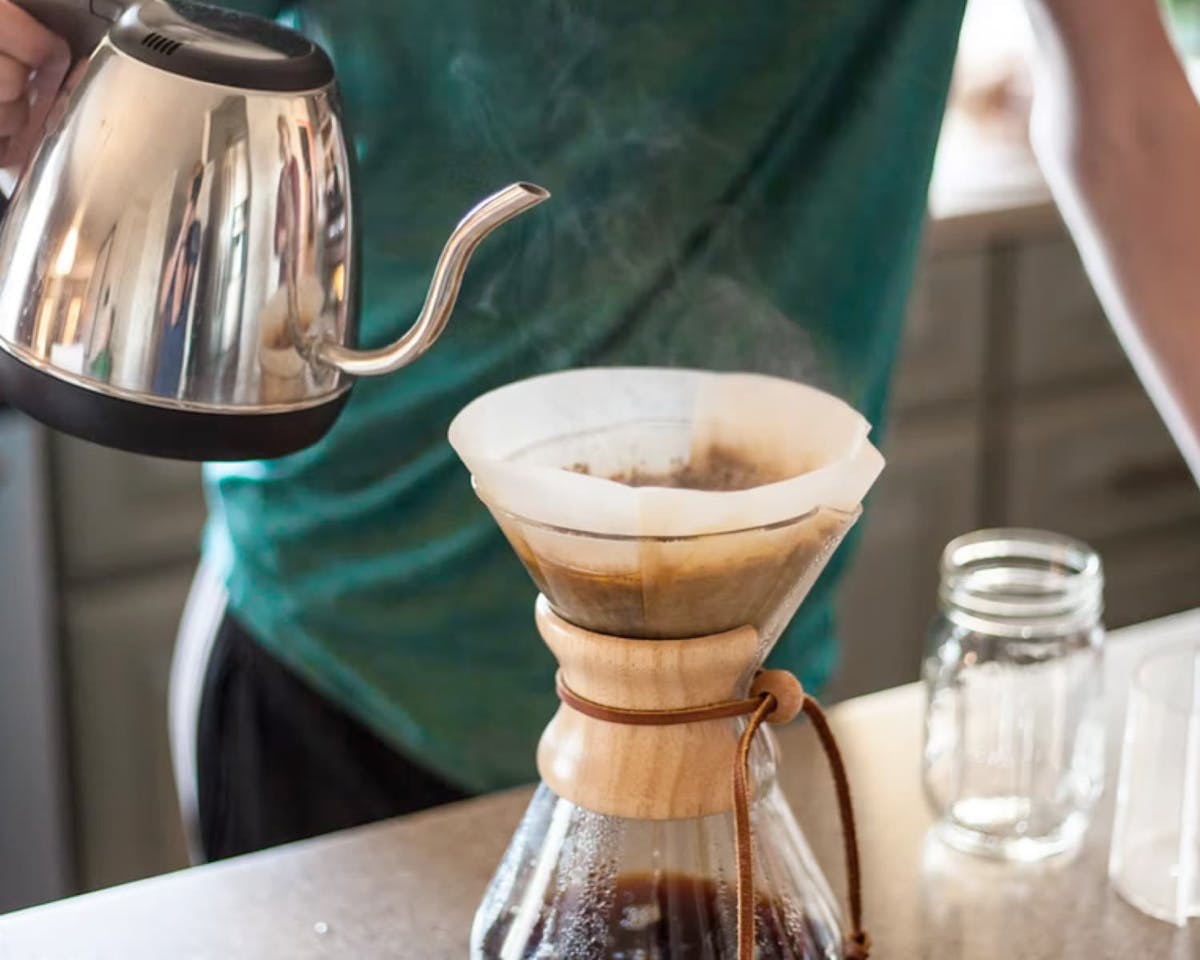
8 Healthy Coffee Recipes That Are Better Than Starbucks
There’s no question about it. Coffee is good for you. Those who don’t like black coffee, of course, commonly add milk, cream and sugar – even if that also means adding calories, fat or carbs to the...



